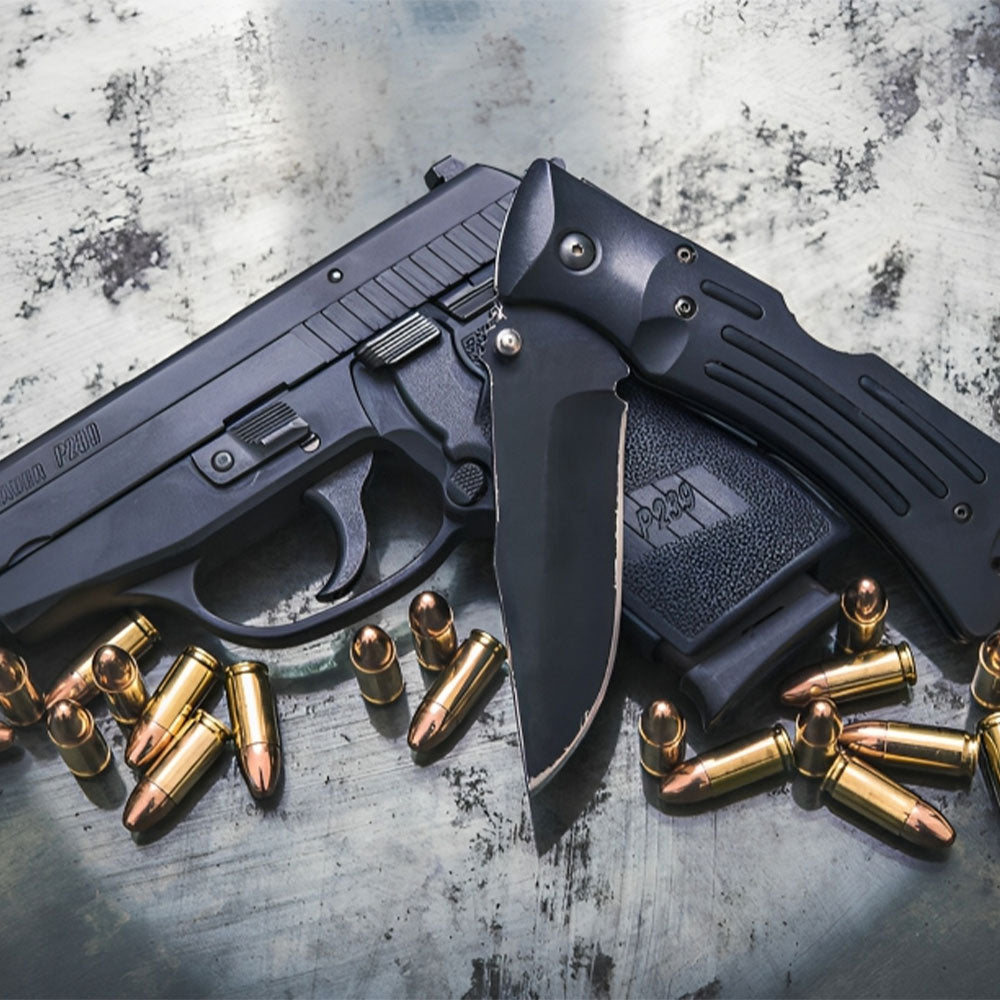
Combination Armor: Bridging the Gap Between Ballistic and Stab Resistance
Sep 18, 2023
The requirements for personal protection equipment, especially body armor, can significantly vary based on the environment and threats. Police officers, security personnel, and military personnel might need protection from bullets and sharp-edged weapons. This has led to the development of combination armor, designed to offer protection from ballistic threats and stabbing instruments. Let's delve deeper into the world of combination armor.
Understanding Threat Levels
Before we jump into combination armor, it's essential to understand the different threats that body armor is designed to mitigate:
- Ballistic Threats: These are threats from firearms, ranging from handguns to high-powered rifles. The energy imparted by a bullet upon impact can be severe, necessitating the use of materials that can disperse this energy effectively. The National Institute of Justice (NIJ) has established standards for various levels of ballistic resistance, ensuring that armor can handle specific types of firearms and ammunition
- Ballistic Resistance of Body Armor NIJ Standard-0101.06: For a comprehensive understanding of these levels, refer to the NIJ's official documentation on Ballistic Resistance Standards: https://nij.ojp.gov/library/publications/ballistic-resistance-body-armor-nij-standard-010106
- Edged Blade Threats: Stabbing instruments like knives or broken bottles work differently from bullets. They don't possess the same energy but focus on cutting or penetrating with a sharp edge. As such, the materials used to resist these threats must prevent the blade from slicing through. NIJ also provides standards for stab and spike threats, distinguishing between the protective requirements against sharp objects and more pointed implements.
- Stab Resistance of Personal Body Armor, NIJ Standard-0115.00: To dive deeper into these classifications and understand the distinctions, visit the NIJ's official documentation on Stab Resistance Standards: https://nij.ojp.gov/library/publications/stab-resistance-personal-body-armor-nij-standard-011500
By understanding and adhering to the NIJ standards, armor manufacturers ensure that their products provide reliable protection against the specified threats. If you're considering body armor, being familiar with these standards is crucial to making an informed choice.
Why the Need for Combination Armor?
Traditionally, body armor was designed with a specific threat in mind. Ballistic vests, for instance, might not provide sufficient protection against a knife attack, as the materials and construction focus on dispersing impact energy rather than preventing penetration from a sharp object. Conversely, stab-resistant vests might not adequately protect against a bullet's impact.
As law enforcement and security personnel roles have evolved, so have the threats they face. It's not uncommon for these professionals to encounter firearms and edged weapons in the line of duty, necessitating armor that can withstand a broad range of threats.
How Does Combination Armor Work?
Combination armor is a testament to the advancements in protective technology, merging different material layers to offer holistic safety. The effectiveness of this armor hinges on the strategic arrangement of these layers. Here's an in-depth breakdown:
- Outer Layers:
- Bullet Deceleration: The foremost layers are designed primarily to decelerate bullets rapidly. By slowing down the projectile, the armor reduces the blunt force trauma to the wearer.
- High Tensile Materials: Materials like Kevlar and Twaron, known for their high tensile strength, are commonly used. These synthetic fibers can stretch without breaking, effectively dispersing the energy of a ballistic impact.
- Layered Composition: Multiple layers of these materials are stacked, with each layer absorbing and dispersing some of the bullet's energy, preventing it from penetrating.
- Inner Layers:
- Flexible Weave: These layers incorporate a flexible yet tightly woven fabric designed to prevent penetration from sharp objects. The tight weave ensures that edged weapons can't easily slip through the fibers.
- Material Rigidity: Some armors include semi-rigid plates or mesh within the inner layers. These provide an added line of defense, ensuring that even if a blade or spike manages to bypass the flexible weave, it's stopped by the more rigid defense.
- Depth of Defense: The multiple layers stop penetration and distribute the force over a larger area. This minimizes the risk of injury from the pressure point of a stabbing attempt.
Together, these layers work in harmony to provide comprehensive protection. Combination armor offers a dual shield in high-risk environments by addressing both the high-energy threat of bullets and the piercing nature of edged weapons.
Choosing the Right Combination Armor
When selecting combination armor, ensuring it meets established standards is crucial. In the U.S., the National Institute of Justice (NIJ) sets these standards, classifying armor based on its ability to withstand specific threat levels. Always check the armor's rating to ensure it meets the required ballistic and stab resistance protection levels.
In our ever-changing world, the threats those in protective roles face can be varied and unpredictable. Combination armor offers a solution, providing comprehensive protection against both ballistic and edged blade threats. But the evolution in protection doesn't end here. Custom Armor Group (CAG) is at the forefront of innovative personal protection solutions. We don't just offer armor; we provide peace of mind. If you're interested in enhancing your protection, especially with our advanced ballistic blanket options, don't hesitate.
Contact our dedicated team at CAG and let us guide you through the best options tailored to your needs. Remember, safety is not a luxury—it's a necessity.
Let CAG be your partner in achieving that security.
← Older Post Newer Post →

